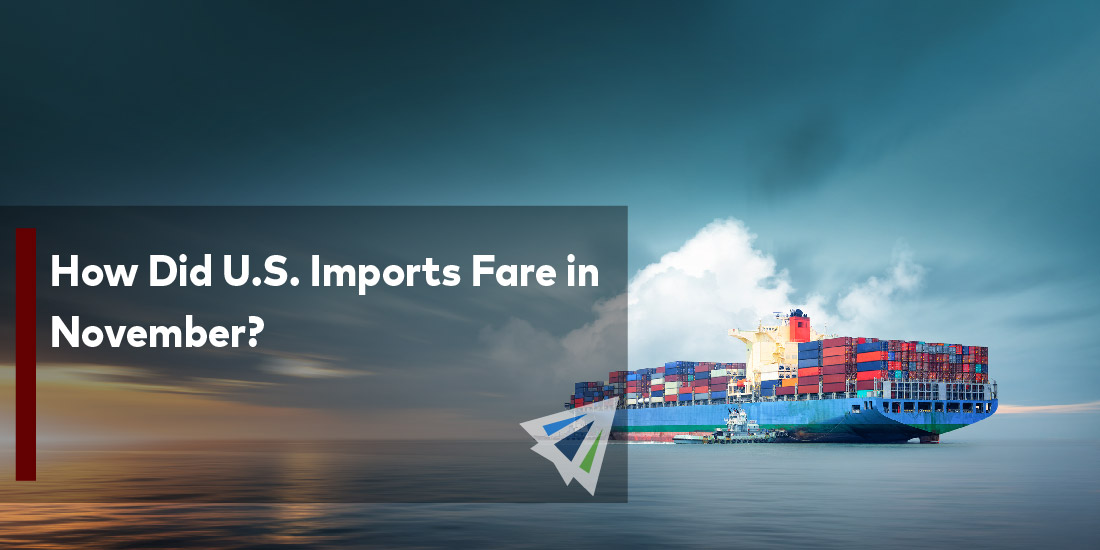The month of November did see some decreases in total U.S. imports handled, but November typically is a weaker month than October and lines up with other years’ performance during this month.
Volumes were up 7.4 percent from last year, but many say the reason for this is due to the bloated inventories that occurred during the end of the “supply chain crisis” during the pandemic.
Check out today’s blog for a close look at the number of imports handled at U.S. ports, how the U.S. Gulf and East coast ports have been impacted by the Panama Canal, and how consumer confidence saw some strength last month.
U.S. Ports Handled Less TEUs Than in October
U.S. ports handled 2,099,408 twenty-foot equivalent units of imports last month – which is 9 percent less than the month of October, per data published by Descartes Datamyne.
The top five West Coast ports accounted for 43.1 percent of total imports last month, while the top five of the East and Gulf Coast ports accounted for 42 percent. Last month, the roles were reversed, and the East Coast was on the upper hand of the total imports for that month.
Panama Canal Impact on USEC and USGC Ports?
As we’ve been discussing for many months now, the Panama Canal has been dealing with a challenging drought crisis, which has undoubtedly impacted the shipping realm.
If interested in details about the Panama Canal crisis and the impact it has on shippers, check out our November webinar where we discuss the topic in depth.
The U.S. East and Gulf Coast have seen some impacts due to the Panama Canal challenges.
In the month of November, the U.S. Gulf Coast saw a significant drop in TEUs compared to October – but still not the lowest level they’ve been this year.

Latest reports on the Panama Canal show that the increase of restrictions are having an impact on Neopanamax transits. As FreightWaves notes, Neopanamax locks are a significant channel for high-capacity container vessels bringing goods from Asia to the USEC and USGC ports. As well as for liquefied petroleum gas and liquefied natural gas carriers transporting exports from the U.S. Gulf to Asia.
Additionally, the total number of transits declined by 22 percent in November versus October this year, per data from the Panama Canal Authority.
Customer Confidence Sees Strength Last Month
“Consumer confidence increased in November, following three consecutive months of decline,” Dana Peterson, Chief Economist at The Conference Board said.
The Consumer Confidence Index was 102, which is up from 99.1 in October. The Present Situation Index dropped down just slightly to 138.2, from 138.6. And finally, the Expectations Index rose to 77.8 in November, which is up from 72.7 in October.
The consumer confidence index is a monthly report detailing consumer attitudes, buying intentions, as well as consumer expectations for inflation, stock prices, and interest rates.
The Present Situation Index is a way to measure overall consumer sentiment regarding the current economic situation.
Looking Ahead
Should you have any questions regarding this and how it could impact your shipments, please reach out to our team today.
Additionally, we have our weekly market updates that can provide you with relevant freight news, updates, developments across the industry, and more.
